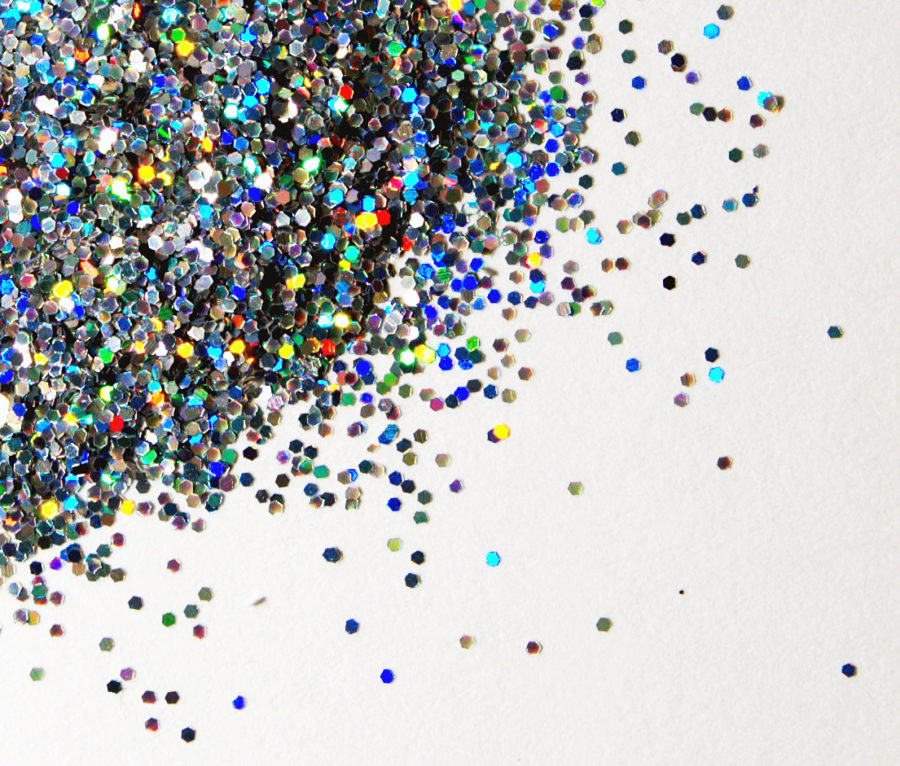The Not-So Sparkly Side of Glitter
February 9, 2022
When asked about one’s opinion on glitter, most people either love it or hate it because though it may look good for your school project, it is incredibly tedious to clean up. However, nobody ever brings up the dangers of glitter from an environmental perspective.
Glitter contains a variety of components, but the ones that are the most detrimental to the environment and to our bodies are polyethylene terephthalate (PET) and polylactic acid (PLA), which are common thermoplastic polymers that are not biodegradable. As glitter uses microscopic sized pieces of plastic, it is considered a microplastic. Similarly to the fate of all microplastics, products that use microplastics end up in landfills that eventually get disposed into oceans and other waterways. In case it’s not evident enough why microplastics getting disposed of into our waterways is incredibly harmful, the microplastic particles add to the current 5.25 trillion pieces of plastic waste that are in our oceans (as of 2021), which is palpably painful to any efforts people have taken to reduce pollution.
Realistically speaking, glitter on its own does not do as much damage to the environment as other products containing microplastics do. Scientists from the Journal of Hazardous Materials state that glitter makes up approximately 1% of microplastics that pollute the earth; it is important to consider, though, that millions of products ranging from holiday gifts to cosmetics have glitter embedded into them, thus it is physically impossible to separate the glitter from the product. Additionally, glitter is also used in products that come in very large amounts such as confetti, sparkles, and sequins- products like these all contribute to the earth’s pollution. As the issue of pollution, climate change, and protecting the environment are becoming increasingly more relevant, many businesses have taken the initiative to stop using glitter in their products. In fact, one popular British supermarket chain, Morrisons, have stated that there will no longer be glitter in their store-brand Christmas products such as crackers, wrapping paper and gift bags. Morrisons’ home director, Christine Bryce, reported in 2018 when the company made this decision, “We’ve taken glitter and plastic out of our festive range this year – so that our customers can enjoy their festivities without worrying about the environmental impact.”
As people have recently acknowledged the negative effects glitter has on the environment, scientists have created biodegradable glitter. Unfortunately, this glitter does not widely differ in terms of the environmental vices it creates. A study carried out by the Anglia Ruskin University (ARU) in Cambridge, UK has found that seemingly environmentally-conscious glitter barely differs in the environmental damage it causes as it gets flown into our waterways regardless and thus damages ecosystems.
All of this information obtrudes a somewhat intriguing question: is glitter really that necessary? All arguments in defense of glitter can be very easily debunked. For example, to make the argument that banning the production of glitter can destroy businesses that rely on glitter to decorate their products, there are little to no businesses that purely rely on glitter for their products and there are many decorative alternatives to glitter. If someone makes the claim that glitter is crucial to making projects, there are a multitude of products that can be used to atone for the decorative design of glitter.
Ultimately, no shimmery decoration can compensate for the disastrous environmental effects glitter engenders.
Next time you hold a jar of glitter, don’t forget that glitter litters.



